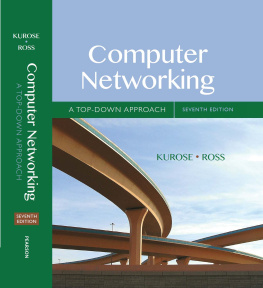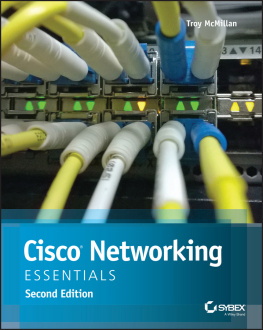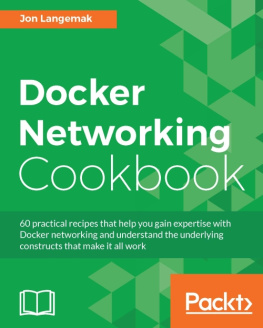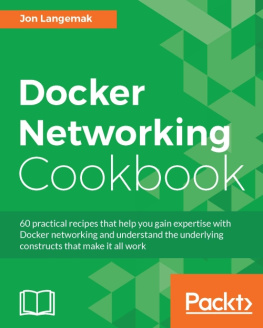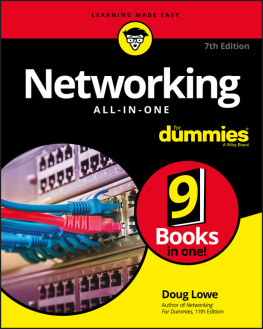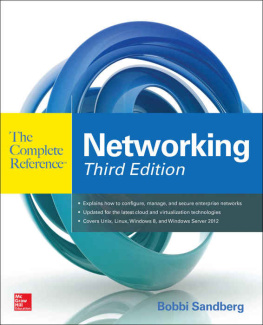Cover
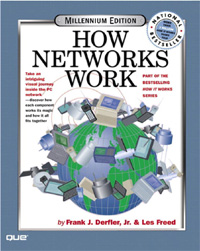
| title | : | How Networks Work |
| author | : | Derfler, Frank J.; Freed, Les. |
| publisher | : | Pearson Education, Inc. |
| isbn10 | asin | : | 0789724456 |
| print isbn13 | : | 9780789724458 |
| ebook isbn13 | : | 9780768655544 |
| language | : | English |
| subject | Computer networks, Local area networks (Computer networks) |
| publication date | : | 2000 |
| lcc | : | TK5105.5.D468 2000eb |
| ddc | : | 004.6 |
| subject | : | Computer networks, Local area networks (Computer networks) |
Page i
How Networks Work
Millennium Edition
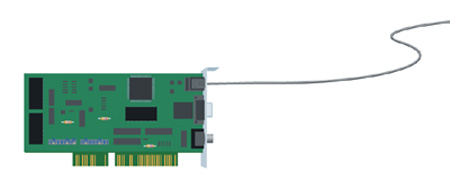
Page ii
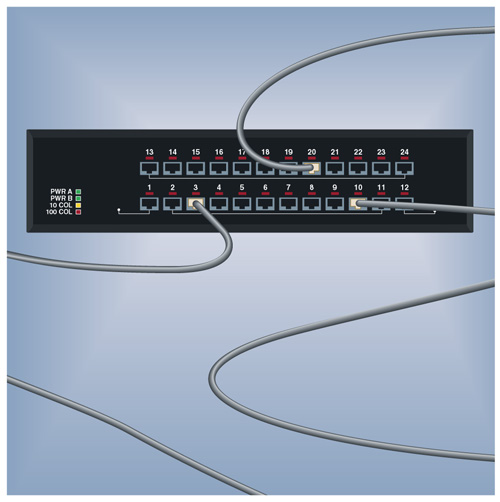
Page iii
How Networks Work
Millennium Edition
Frank J. Derfler, Jr. and Les Freed
Illustrated by Stephen Adams, Laura Robbins, Patricia Douglas, and Michael Troller

Page iv
Copyright 2000 by Que Corporation
All rights reserved. No part of this book shall be reproduced, stored in a retrieval system, or transmitted by any means, electronic, mechanical, photocopying, recording, or otherwise, without written permission from the publisher. No patent liability is assumed with respect to the use of the information contained herein. Although every precaution has been taken in the preparation of this book, the publisher and author assume no responsibility for errors or omissions. Nor is any liability assumed for damages resulting from the use of the information contained herein.
International Standard Book Number: 0-7897-2445-6
Library of Congress Catalog Card Number: 00-103926
Printed in the United States of America
First Printing: September, 2000
02 01 00 4 3 2 1
Trademarks
All terms mentioned in this book that are known to be trademarks or service marks have been appropriately capitalized. Que Corporation cannot attest to the accuracy of this information. Use of a term in this book should not be regarded as affecting the validity of any trademark or service mark.
Warning and Disclaimer
Every effort has been made to make this book as complete and as accurate as possible, but no warranty or fitness is implied. The information provided is on an ''as is" basis. The authors and the publisher shall have neither liability nor responsibility to any person or entity with respect to any loss or damages arising from the information contained in this book.
Screen reproductions in this book were created by using Collage Plus from Inner Media, Inc., Hollis, NH.
Associate Publisher
Greg Wiegand
Acquisitions Editor
Heather Banner Kane
Development Editor
Nicholas J. Goetz
Managing Editor
Thomas Hayes
Project Editor
Tonya Simpson
Copy Editor
Tonya Simpson
Indexer
Aamir Burki
Proofreader
Maribeth Echard
Technical Illustrators
Stephen Adams, Laura Robbins, Patricia Douglas, and Michael Troller
Interior Designer
Trina Wurst
Cover Designer
Anne Jones
Production
Trina Wurst
Page v
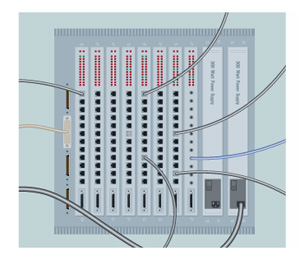
Page vi
TABLE OF CONTENTS
Introduction | |
Part 1 Communicating by Wire |
Chapter 1
The Telegraph | |
Chapter 2
The Telephone | |
Chapter 3
Printing Telegraphs | |
Part 2 Mixing Computers and Telephones |
Chapter 4
The Early Networks | |
Chapter 5
From Keypunches to Terminals to the Carterfone | |
Chapter 6
Alphabet Soup: Morse, Baudot, ASCII, and EBCDIC | |
Chapter 7
The Bell 103 Modem | |
Chapter 8
Dialing for Data | |
Chapter 9
The RS-232C Serial Interface | |
Chapter 10
The Personal Computer As a Terminal | |
Chapter 11
Smart Modems | |
Chapter 12
Computer Telephony Integration | |
Part 3 Local Area Networks (LANs) |
Chapter 13
A Network Model | |
Chapter 14
Network Operating Systems | |
Page vii
Chapter 15
The Network Interface Card | |
Chapter 16
Network Cabling | |
Chapter 17
Server-Based LANs | |
Chapter 18
Peer-to-Peer Networks | |
Chapter 19
Enterprise Network Systems | |
Chapter 20
LAN-to-LAN Connections | |
Part 4 Links Between LANs |
Chapter 21
Bridges, Routers, and Switches | |
Chapter 22
Metropolitan Area Networks (MANs) | |
Chapter 23
Circuit-Switched Digital Services | |
Chapter 24
Packet-Switching Networks | |
Part 5 The Internet |
Chapter 25
Internet Connections | |
Chapter 26
Network Security | |
Part 6 Networks for E-Business |
Chapter 27
E-Business Infrastructure | |
Index | |
Page viii
This page intentionally left blank.
Page 1
INTRODUCTION
More than 80 percent of the personal computers used in business and education are connected to a network or the Internet. The chances are good that you'll have to interact with a network soon if you don't already. This book helps you understand computer networks in several ways. It helps to scratch the intellectual itch you might have about where the data resides and what goes on inside the cable, equipment, and software. If you understand the basic structure and operation of a network, you can be more efficient in your job. The information in this book is an excellent foundation for growth if you want to learn more about networking. Finally, you can use this book as a training tool for working on networked computers.
Next page

